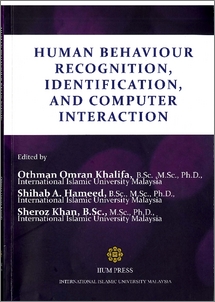Khalifa, Othman Omran and Khan, Imran Moez and Htike@Muhammad Yusof, Zaw Zaw and Lai, Weng Kin
(2011)
Introduction to intelligent video surveillance system.
In:
Human Behaviour recognition, Identification and Computer Interaction.
IIUM Press, Kuala Lumpur, pp. 107-112.
ISBN 978-967-418-156-7
![[img]](http://irep.iium.edu.my/style/images/fileicons/application_pdf.png)  Preview |
|
PDF (Introduction to intelligent video surveillance system )
- Published Version
Download (457kB)
| Preview
|
Abstract
Most surveillance systems today provide only a passive form of site monitoring. Extensive video records may be kept to help find the instigator of criminal activities after the crime has been committed but preventive measures usually require human involvement. In addition to this, there is a need for large amounts of data storage to keep up to several terabytes of video streams that may be needed for later analysis. For any sense of real-time monitoring, guards often need to be employed to watch video feeds for hours on end to recognize suspicious, dangerous or potentially harmful situations. In multi-camera scene monitoring systems, this becomes quite infeasible as there can be up to 20 to 50 cameras on average in a large
complex such as an airport or Megamall. However, monitoring and storage space are not the only concerns. Even if these costs can be borne, there is the additional problem of reviewing this vast amount of video data after a crime or incident has occurred
Actions (login required)
 |
View Item |


 Download Statistics
Download Statistics Download Statistics
Download Statistics